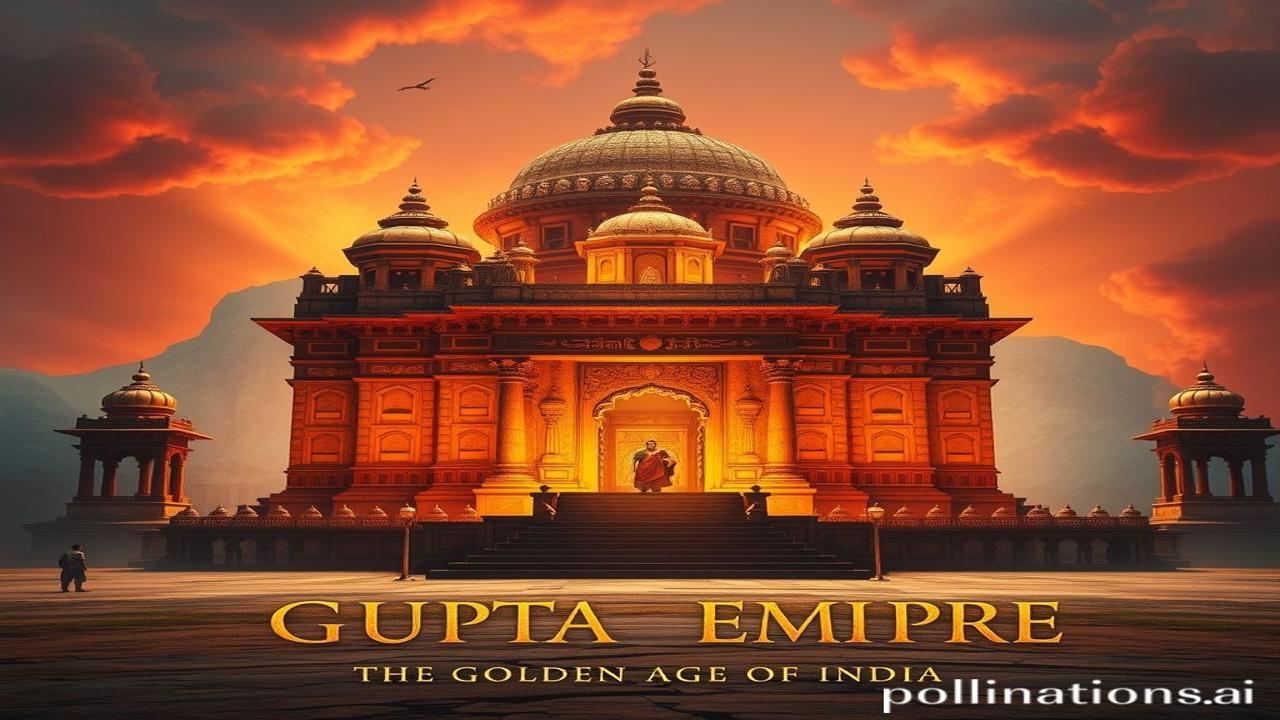Gupta Empire: India’s Golden Age – Sunehri Yaadon Ki Dastaan
Kabhi raat ke andhere mein, chandni se dhuli nadi ke kinare baithkar socha hai, us daur ke baare mein jab Bharat sone ki chidiya kehlata tha? When art flourished, science soared, and spirituality reached new heights? Waqt ki dhool mein dabi, woh kahani hai Gupta Samrajya ki – India’s Golden Age!
Gupta Samrajya: Ek Historical Nazar (Historical Overview)
What exactly was the Gupta Empire? Think of it as a period, roughly from the 4th to 6th centuries CE, when much of the Indian subcontinent was unified and thriving under the Gupta dynasty. It’s like the Renaissance of India!
This time period is important because, unlike some other empires built purely on conquest, the Gupta era prioritized peace, prosperity, and cultural development. They didn’t just conquer; they cultivated. Think of kings like Chandragupta I, Samudragupta (the “Napoleon of India,” though some historians debate this!), and Chandragupta II (Vikramaditya). They not only expanded their territories but also patronized the arts, sciences, and literature.
Lesser-known fact: The Gupta Empire didn’t have a single, centralized administration for its entire duration. It was more of a loose confederation, with local rulers owing allegiance to the Gupta emperors. This allowed for regional variations in art and culture to flourish!
Zameeni Sach: Logon Aur Jeevan (The Human Element)
Imagine Ma Rukmini, a potter in Pataliputra (modern-day Patna), carefully shaping clay into exquisite pots, her fingers dancing across the wet earth. Aaj, she adds a delicate floral design, inspired by the Ajanta cave paintings she heard about from a traveling merchant.
Meanwhile, in Nalanda, a young boy named Arya is studying mathematics under the watchful eye of his guru. He’s learning about decimals and zero, groundbreaking concepts that will revolutionize the world. He dreams of contributing to the shastras and expanding the boundaries of knowledge.
Meanwhile, Chandragupta II himself reviews plans for a new Vishnu temple. He is not merely a king but also a protector of dharma, a patron of art, and a believer in encouraging the best in his people. The Gupta emperors valued meritocracy, allowing talented individuals from all walks of life to contribute to the empire’s prosperity.
Dharohar Aur Pehchan (Cultural Significance Today)
The echoes of the Gupta Empire resonate even today in Indian culture. Look at the classical dance forms like Kathak and Bharatanatyam – their foundations were solidified during the Gupta period. Think of the iconic Ajanta and Ellora caves, with their breathtaking sculptures and paintings. Their influence continues to inspire artists and artisans even in the 21st century.
Moreover, the emphasis on education and knowledge during the Gupta era laid the groundwork for India’s later achievements in mathematics, astronomy, and medicine. This pride in ज्ञान (gyan) and कला (kala) is still a core part of our Bharatiyata.
Mazedar Tathya Ya Bhram-Bhanjak (Fun Fact or Myth-Buster)
Log samajhte hain ki the Gupta empire was solely a Hindu empire. Lekin asli sach yeh hai, while Hinduism was the dominant religion, Buddhism and Jainism also flourished under Gupta rule. They were tolerant rulers who respected all faiths, leading to a harmonious co-existence. Another important fact is the Gupta invented zero, which greatly impacted the advancement of mathematics.
Drishya Aur Bhavnaein (Visual & Sensory Layer)
The air during the Gupta era might have smelled of sandalwood incense wafting from the numerous temples, mixed with the earthy scent of freshly tilled fields. The sounds of chanting from the monasteries would blend with the rhythmic clanging of hammers from the workshops where artisans crafted exquisite jewelry and sculptures.
The walls of the temples would have felt cool and smooth to the touch, adorned with intricate carvings depicting stories from the epics. Imagine the vibrant colors of the paintings, the rich fabrics worn by the courtiers, and the lively atmosphere of the bustling marketplaces.
Antim Vichar Ya Uddharan (Closing Insight or Quote)
The Gupta Empire may be long gone, but its legacy endures. It reminds us that India’s true strength lies not just in its political power but also in its cultural richness and intellectual prowess.
As the Bhagavad Gita says, “कर्मण्येवाधिकारस्ते मा फलेषु कदाचन” (karmanye vadhikaraste ma phaleshu kadachana) – “You have the right to perform your prescribed duty, but you are not entitled to the fruits of action.” The Gupta emperors embodied this principle, focusing on creating a society where knowledge, art, and dharma could flourish, leaving behind a golden legacy that continues to inspire us today.
